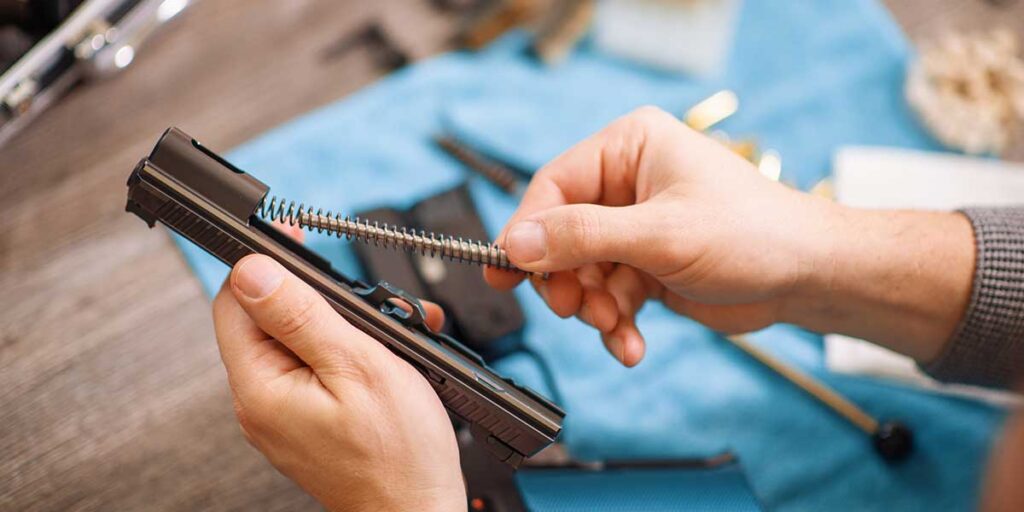Our personal firearms serve us in a variety of ways. The most important of those is their ability to provide us protection from lethal threats. While they can provide us hours of enjoyment on the range, once we drive back into society, they take on a much more serious role. In order for us to have ultimate faith in our firearms though we must consistently maintain them.
Gun cleaning is seen by some as an annoying chore that they avoid at all costs. To exacerbate the issue, urban legends regarding gun cleaning have developed over the years. These are especially true with striker fired guns. The cliché is that Glocks do not really need to be cleaned because they are super reliable. While the Glock does indeed have great resistance to dust and carbon, it is still a mechanical device that needs regular maintenance. Ultimately the question is, would you bet your life on that gun should the worst-case scenario take place? This presents the maintenance and cleaning of our firearms in a profoundly serious light. I am here to tell you though that regular maintenance of your firearm can actually be enjoyable and educational. Many people find the process relaxing and almost meditative.
Regular maintenance of your firearm not only improves reliability but also increases the life span of the gun. This is important as many people invest serious money in their guns. A well-maintained gun can last generations. When we spend time at the range our guns naturally build up residual fouling, which consists of particles from the bullet and burnt gunpowder that builds up in the barrel and action. Throw into that our lube collecting debris and dust and the gun quickly can become a mess. This build-up over time can affect the gun’s ability to fire and cycle and can ultimately lead to a trip to a gunsmith. An unwelcomed collection of gunk in our gun can also greatly affect accuracy. Fouling in the barrel interferes with the firearms’s ability to reliably rotate the bullet consistently and can make target practice less than enjoyable. In a personal defense situation accuracy is essential and we need to make sure our gun is up to the challenge.
One of the overlooked perks of regular maintenance of your gun is gaining a better understanding of just how it works. Getting a detailed look at the inner workings of your gun helps you to understand how it works. I have found this to be invaluable knowledge especially with newer shooters. While it is hard to explain, I have found that people have an increased comfort and confidence with their gun once they take it apart and put it back together.
For those of you new to gun maintenance there are a few things that should be part of your routine. First is to consult the owner’s manual for your gun. While it is a running joke that people do not read owner’s manuals of any kind, it is important when it comes to your gun. Disassembling your gun and then putting it back together without directions can not only be frustrating but can lead to a gun that does not function. The next step is to get your cleaning area set up. Find a quiet area that will be free of distractions. It should also have good lighting and ventilation. Some gun cleaning solutions are harsh on the nose and fresh air is a must.
On that note, there are a growing number of gun cleaning and lubrication solutions that are non-toxic and environmentally friendly. You can use a table or bench as long as you have plenty of room to work. I also suggest the use of a neoprene cleaning mat to protect the surface you are working on. I encourage you to use a magnetic bowl or plate to place your parts on. Many a gun owner has launched into an expletive rich tirade when they have small parts launch off the bench never to be found again.
The final step we must take before we start to break down our gun is to make sure it is unloaded. One of the four firearms safety rules is to assume all firearms are loaded. History is full of people who negligently discharged their firearms during disassembly because they broke this rule. You should remove the magazine and then clear the chamber. Visually inspect the chamber to makes sure it is empty then insert a finger into the magwell to confirm that no magazine is present. I suggest you go one step further and remove any ammunition or loaded magazines from your cleaning area.

